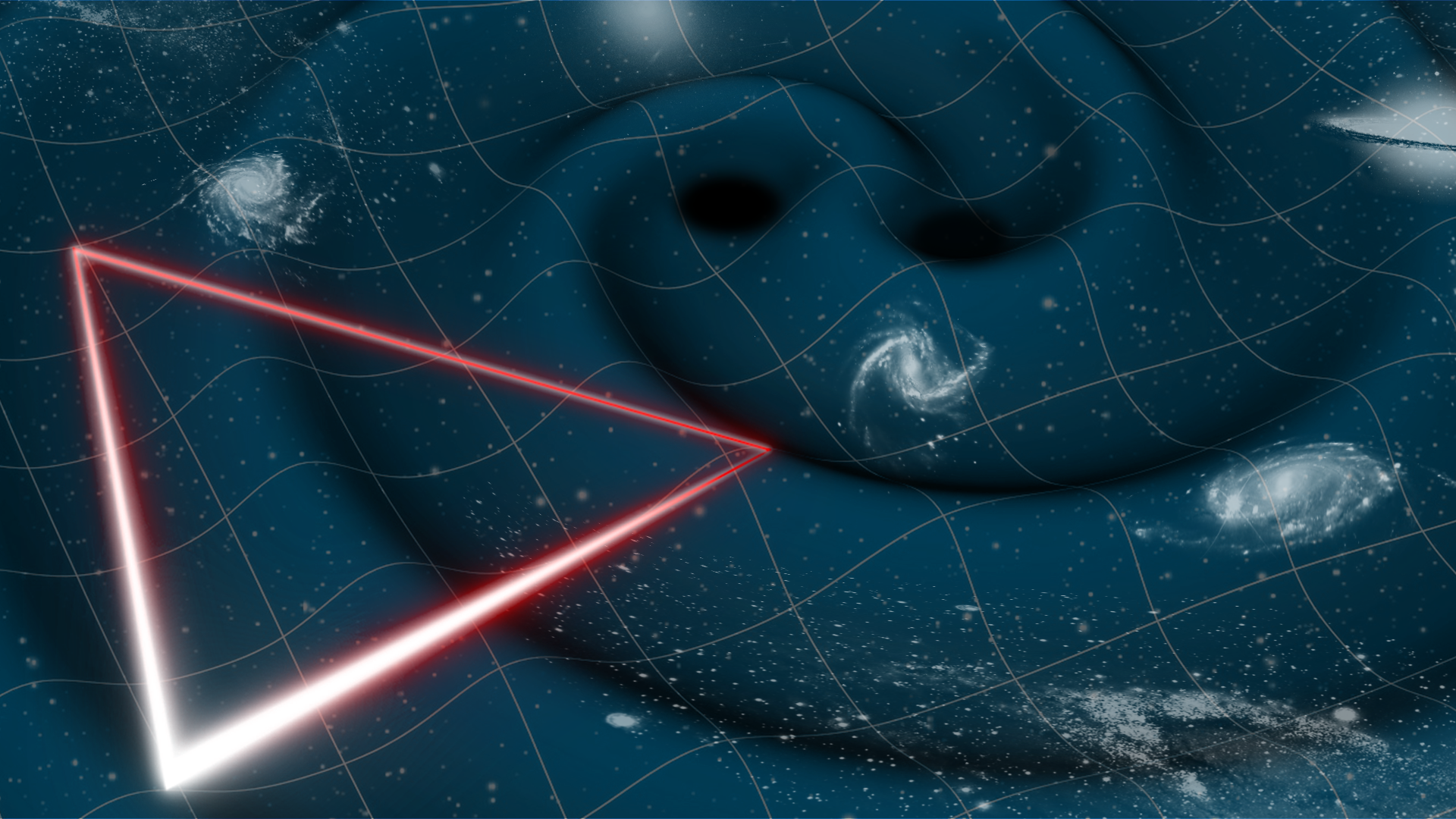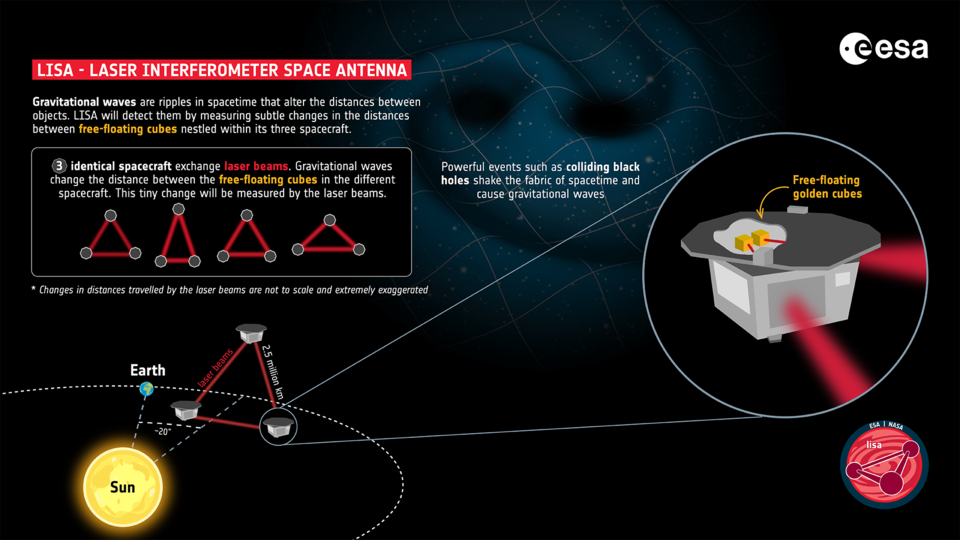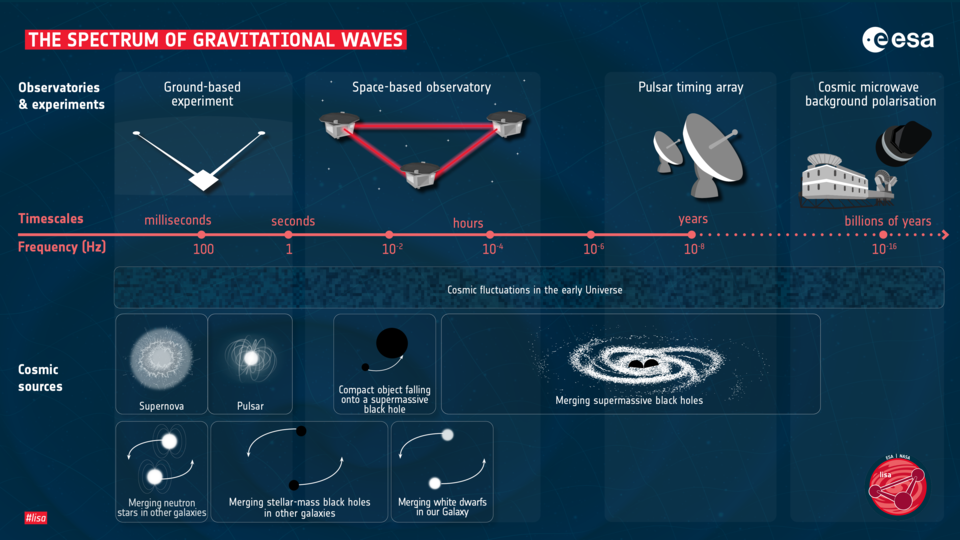
Humanity's first space-based gravitational wave detector has received the go-ahead.
The Laser Interferometer Space Antenna (LISA) mission, which consists of three spacecraft that together form a single gravitational wave detector, is a collaboration between NASA and the European Space Agency (ESA). It's set to launch in the mid-2030s.
The adoption of LISA was announced by ESA on Jan. 25, and recognizes that the mission concept and associated technology are sufficiently advanced. Getting the green light means scientists can start building the spacecraft as well as its required instruments; work will begin in Jan. 2025 after a European industrial contractor has been selected for construction.
The three spacecraft of LISA will trail Earth as our planet orbits the sun, forming an equilateral triangle in space. Each side of this triangle which will be a staggering 1.6 million miles (2.6 kilometers) long. The LISA craft will fire laser beams down these sides, which will experience minute-long alterations as gravitational waves pass over them, squashing and squeezing the very fabric of space.
"LISA is an endeavor that has never been tried before," LISA lead project scientist Nora Lützgendorf said in a statement. "Using laser beams over distances of several kilometers, ground-based instrumentation can detect gravitational waves coming from events involving star-sized objects — such as supernova explosions or the merging of hyper-dense stars and stellar-mass black holes. To expand the frontier of gravitational studies, we must go to space."
Gravitational waves were first predicted by Albert Einstein, arising from his 1915 theory of gravity: General relativity.
This revolutionary theory suggested that gravity arises as the result of objects with mass curving the very fabric of space and time, which are actually united as a single entity called spacetime. The greater the mass of an object, the larger the curvature that object causes — and thus the greater its gravitational influence. General relativity therefore explains, for instance, why stars have a stronger gravity than planets, but black holes have a stronger gravity than stars.
In addition to this, general relativity says that when a body in space accelerates, this movement creates ripples in spacetime that radiate outwards. These gravitational waves are insignificant unless the accelerating objects are massive compact objects (like black holes or neutron stars) orbiting around one other and eventually colliding. Collapsing massive stars can, which also trigger supernova explosions, can send out some substantial waves.
Yet, even in the most extreme cases, Einstein believed that gravitational waves would still be too faint to detect from Earth. He was wrong about that.
Fortunately, in Sept. 2015, the Laser Interferometer Gravitational-Wave Observatory (LIGO) in the U.S. and the Virgo interferometer in Italy indeed detected ripples in spacetime. These waves were formed from the collision and merger of two black holes 29 and 36 times the mass of the sun, located over 1 billion light-years away.
And. since then, gravitational wave astronomers have detected signals from a multitude of events, including more black hole mergers, neutron star collisions and even mixed mergers between a black hole and a neutron star.

LISA is ready to take this achievement even further as a space-based interferometer with the sensitivity to "hear" gravitational waves from merging black holes, neutron stars and supernovas at much greater distances than is possible for Earth-based detectors. This also means it'll be able to search for waves sourced from events further back in time.
"Thanks to the huge distance traveled by the laser signals on LISA and the superb stability of its instrumentation, we will probe gravitational waves of lower frequencies than is possible on Earth, uncovering events of a different scale, all the way back to the dawn of time," Lützgendorf said.

As well as detecting gravitational waves from more distant sources, LISA should also provide astronomers with the sensitivity to investigate closer and less extreme events such as the merger of compact white stars, which are born when smaller stars like the sun die.
"For centuries, we have been studying our cosmos through capturing light. Coupling this with the detection of gravitational waves is bringing a totally new dimension to our perception of the Universe," LISA project scientist Oliver Jennrich said in the statement. "If we imagine that, so far, with our astrophysics missions, we have been watching the cosmos like a silent movie, capturing the ripples of spacetime with LISA will be a real game-changer, like when sound was added to motion pictures."







